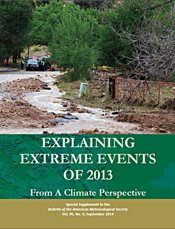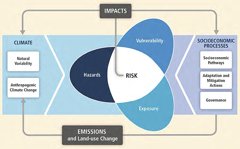 So, the threat of a terrorist attack on New Zealand i
So, the threat of a terrorist attack on New Zealand is upon us has risen from “very low” to “low” — second to lowest in a ranking that has six levels. Cabinet is now urgently reviewing our security laws to make sure we’re equipped to deal with this horrific new threat. The media has dedicated hours of discussion, gigabytes of online content, and metres of newspaper articles to this important issue. I’m now quaking in my boots.
The day after John Key’s announcement of this new “low” threat, a major report on a global security threat went entirely unnoticed here in New Zealand. The Pentagon’s “2014 Climate Change Adaptation Roadmap,” released on October 14, warns that climate change is an “immediate threat” to national and global security, describing it as a “threat multiplier” that can worsen national security problems such as terrorism and the spread of infectious diseases.
The report says:
“Rising global temperatures, changing precipitation patterns, climbing sea levels, and more extreme weather events will intensify the challenges of global instability, hunger, poverty, and conflict. They will likely lead to food and water shortages, pandemic disease, disputes over refugees and resources, and destruction by natural disasters in regions across the globe.”


 The latest climate extremes report finds that 9 out of 16 extreme weather events from last year were influenced by climate change. In particular, the conditions that led to New Zealand’s severe North Island drought — the worst for 41 years, estimated to have cost the economy NZ$1.3 billion — were made more likely by the effects of continued warming. Australia’s hottest ever year and run of record-breaking heatwaves also had humanity’s fingerprints all over it. The new research —
The latest climate extremes report finds that 9 out of 16 extreme weather events from last year were influenced by climate change. In particular, the conditions that led to New Zealand’s severe North Island drought — the worst for 41 years, estimated to have cost the economy NZ$1.3 billion — were made more likely by the effects of continued warming. Australia’s hottest ever year and run of record-breaking heatwaves also had humanity’s fingerprints all over it. The new research — 
 Last week was something of a trial: bits of my little farm were being washed out to sea, tracks were eroding, and our road was closed by slips and rockfalls. Just another in a sequence of extreme weather events that have got the locals in North Canterbury wondering about the weird weather being inflicted on them. In my Daily Blog post this week —
Last week was something of a trial: bits of my little farm were being washed out to sea, tracks were eroding, and our road was closed by slips and rockfalls. Just another in a sequence of extreme weather events that have got the locals in North Canterbury wondering about the weird weather being inflicted on them. In my Daily Blog post this week —  After the usual run of
After the usual run of
You must be logged in to post a comment.